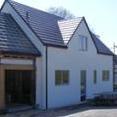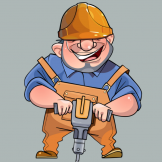-
Posts
29980 -
Joined
-
Last visited
-
Days Won
412
ProDave last won the day on June 26
ProDave had the most liked content!
About ProDave
- Birthday 03/09/1963
Personal Information
-
About Me
Self builder in the Highlands, see my blog here <a href="http://www.willowburn.net" rel="external nofollow">http://www.willowburn.net</a> Heading for retirement, our "Adventure before Dementia"
-
Location
Scottish Highlands
Recent Profile Visitors
32707 profile views
ProDave's Achievements

Advanced Member (5/5)
8.8k
Reputation
-
Do you mean 2.4m? That is low for the apex of a vaulted ceiling and would not be high enough for that sort of multi pendant fitting.
-
We have one light fitting in our 5M by 4M bedroom. It is a high ceiling with a light fitting that hangs down a long way with 3 lamps in it. Works no problem. How easy to change at this stage? What is above? Accessible loft space, easy peasy. Vaulted ceiling with just a small service void could be very difficult.
-
I assume some sort of hand rails are still to be fitted? There is one lone wooden post in place at the moment suggesting that might be the case. I would have made them less wide, but perhaps they are that wide to allow an infirm person to use them with a helper with them? Agreed about the lack of edging, the grass will quickly encroach on the steps.
-
Why is anyone paying? I thought this was supposed to be covered by a government initiative to provide gigabit internet to all properties?
- 9 replies
-
- vat
- zero-rated vat
-
(and 2 more)
Tagged with:
-
What was asked for and agreed? They are functional if not pretty. Of course the devil is in the detail that you can't see, what base has been laid under the grass to support them?
-
It's been plumbed wrong. The cold taps should be fed from the same pressure reduced feed as feeds the cylinder. Instead it sounds like yours are fed direct from the mains and since you turned the pressure down, as you say the cold feeds are now at a higher pressure.
-
The highlighted word is the important one. Judging by the way he butchered your wall I am not sure that word applied here?
-
"Summer bypass" is a poor description of this function. It is in reality "heat exchanger bypass" In summer when it is hot, the heat exchanger can actually work in reverse and COOL the incoming air. Operating "summer bypass" then, would just allow ever hotter air into the house. I have never used the bypass function on mine, I struggle to find the very few times it would actually be of any use.
-

ASHP without Boiler Upgrade Scheme?
ProDave replied to timhowes's topic in Air Source Heat Pumps (ASHP)
You choices are get the kit and design for £0 which takes account of the grant, then pay your chaps to fit it. Or ignore the grant altogether, buy the kit yourself, pay your guys to fit it and get nothing. -

ASHP without Boiler Upgrade Scheme?
ProDave replied to timhowes's topic in Air Source Heat Pumps (ASHP)
One option to look at is a number of companies will supply the kit for free (using the BUS grant) with design and paperwork, leaving you (or your builder) to install it. Any competent plumber and electrician that can read the install manual will be able to install it. -
When building a house, you can have cheap, fast and good. But you ONLY ever get at most 2 of those. We chose cheap and good with us doing a lot ourselves but it took several years. To have paid someone to just build it would have resulted in a house that cost way more than it was worth. Perhaps self building only suits the practical sort willing to do a lot of the work?
-

MVHR and cooling
ProDave replied to flanagaj's topic in Mechanical Ventilation with Heat Recovery (MVHR)
By far the simplest way to manage heat, is during the day keep all windows shut and curtains closed on sunny side of house. Then at night throw all the windows open to cool the house from the cooler night time air. Trying to tell someone NOT to open a window when "it's hot" just does not seem to sink in. -
^^^ It makes my blood boil that some councils waste so much time and money on stupid things like the above, and fail to do the things they should be doing.
-
The holes are where he went probing to try and find a stud, and the long screws are because he didn't have any plasterboard fixings. All speculation of course.








